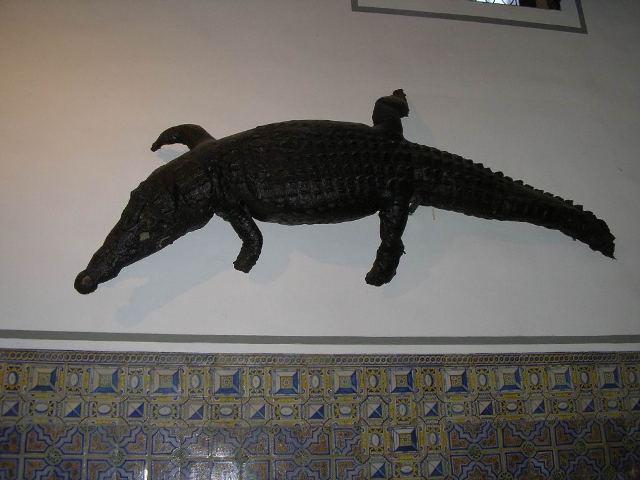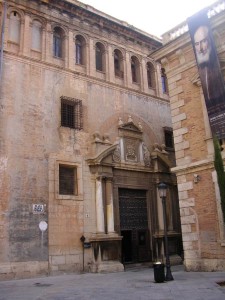Valencia isn’t all sunshine, beaches, smiles and paella; there is a dark side in case you need to frighten the children.
 Of course there was a time when Valencia didn’t have a City of Arts and Sciences, nor a Tourist Bus, and not even a fistful of Irish pubs for British tourists to celebrate a ‘stag weekend’ in, a thankfully reduced phenomenon since Ryanair reduced its commitment to Valencia, and anyway they were mostly semi-conscious and largely unaware to all extents and purposes which country they were in, let alone which city.
Of course there was a time when Valencia didn’t have a City of Arts and Sciences, nor a Tourist Bus, and not even a fistful of Irish pubs for British tourists to celebrate a ‘stag weekend’ in, a thankfully reduced phenomenon since Ryanair reduced its commitment to Valencia, and anyway they were mostly semi-conscious and largely unaware to all extents and purposes which country they were in, let alone which city.
In those days it was the Valencian imagination that kept the tourists busy, and just as the British have traditionally fabricated a successful industry around non-existent ghosts and haunted house or visits to place where fictional characters lived or stalked, such as Baker Street for Sherlock Holmes, Whitby for Dracula, the Sherwood Forest Fun Park for Robin Hood or Tintagel for King Arthur, or places where somebody once loomed but where there’s absolutely nothing to see now, as is the case with Jack the Ripper tours of East London, where even our profitable fog is long gone, so Valencia has a few legends with which it has invented its past, like the one and only genuine Holy Grail, currently in the Cathedral, on loan from Indiana Jones.
The Turia Dragon legend dates back to 1392, when Valencia still had Jews and Moors, before they converted, fled or fed the flames of the Inquisition’s fires where the Central Market now stands.
In those days the Turia was known as the Guadalaviar River and the Serranos Towers were a glint in some architect’s eye. The Serranos Bridge already existed; it is in fact the site of the oldest stone bridge in the city, dating back to 1088.
The Arabs (another people with vivid imaginations) called it Al Qantara, which means ‘The Bridge’ (well, perhaps not so imaginative after all). In 1093, none other than El Cid, in the days before he discovered that he was really Charlton Heston and that Valencia was really Peñiscola, launched a failed attack across the bridge while besieging the city.
The bridge was rebuilt several times after flooding until it was totally destroyed in the flood of 1517, the present bridge being rebuilt in 1518.
The legend states that a dragon lived by the bridge and used to terrorise those who sought to cross it, taking as its toll limbs, heads and even, on occasion, imposing a full corporeal 100% tax.
One interpretation is that Saint George, who is the patron Saint of Catalonia as well as England, (the dragon is often supposed to be Madrid, and especially Real Madrid) arrived in Valencia in disguise wearing a cape. and that when he removed the cape, his armour was covered in mirrors, which allowed him to blind and kill the dragon.
Another story is that the dragon slayer was a prisoner called Carbucco, who had been condemned to death and who was given the opportunity of a pardon if he wouldn’t mind dealing with a minor public health problem. Valencia is after all a great place to eat, but not such a nice place to be eaten.
Other candidates were a Jew and a thief, as always. Whatever the truth, and there probably is none, the dragon’s body is now on show at the Patriarch College, next door to the museum of the same name in Calle de la Nave, next to the old University.
If you walk inside the lobby and look to your left behind the door, you’ll see the dragon, which grandparents used to show to video game-starved grandchildren in the good old days to set them up for a peaceful night’s sleep when they hadn’t done their homework.
Any claims that it is in fact just an old, stuffed alligator should be treated with the contempt they deserve. After all, if Calatrava’s pyramids continue to crumble, we may need to reinvent some of these old legends.

